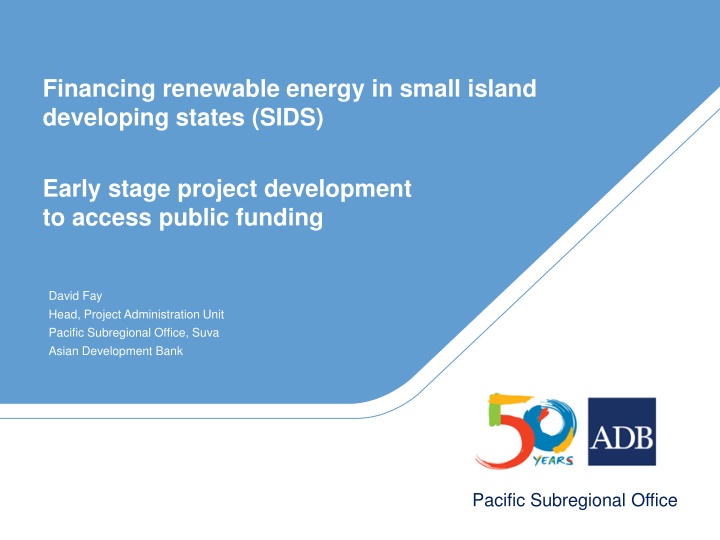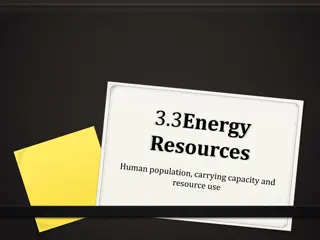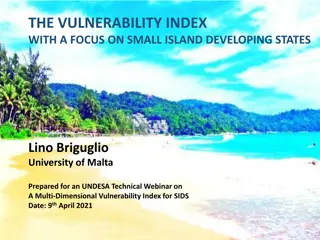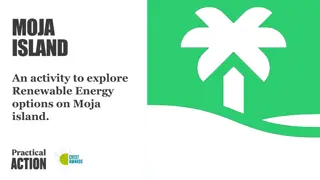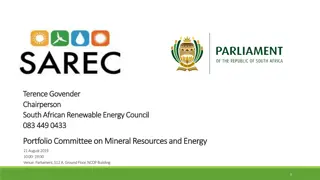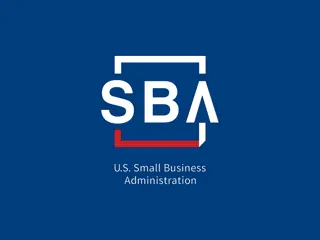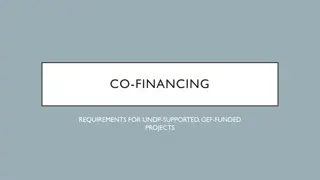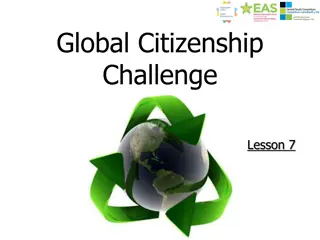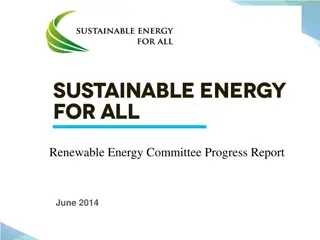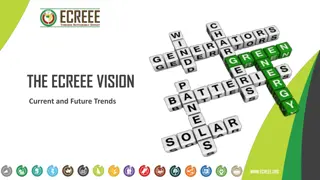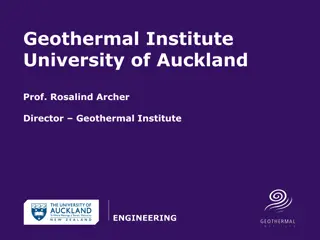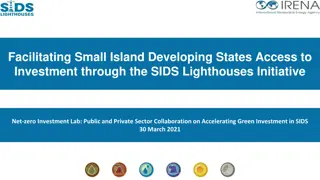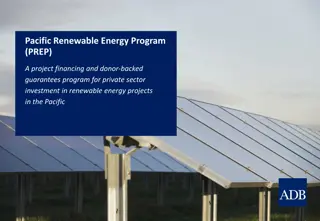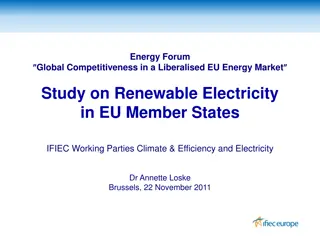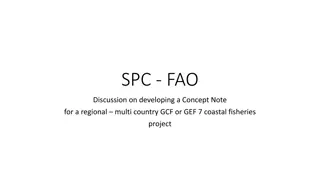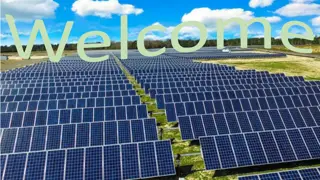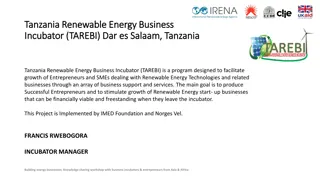Financing Renewable Energy in Small Island Developing States (SIDS)
Early-stage project development and access to public funding for renewable energy in Small Island Developing States (SIDS), with a focus on the initiatives by the Asian Development Bank in the Pacific region. The Pacific power sector trends and analysis, along with the role of the Green Climate Fund, are also discussed.
Download Presentation

Please find below an Image/Link to download the presentation.
The content on the website is provided AS IS for your information and personal use only. It may not be sold, licensed, or shared on other websites without obtaining consent from the author.If you encounter any issues during the download, it is possible that the publisher has removed the file from their server.
You are allowed to download the files provided on this website for personal or commercial use, subject to the condition that they are used lawfully. All files are the property of their respective owners.
The content on the website is provided AS IS for your information and personal use only. It may not be sold, licensed, or shared on other websites without obtaining consent from the author.
E N D
Presentation Transcript
Financing renewable energy in small island developing states (SIDS) Early stage project development to access public funding David Fay Head, Project Administration Unit Pacific Subregional Office, Suva Asian Development Bank Pacific Subregional Office
ASIAN DEVELOPMENT BANK Multilateral development bank est. 1966 Owned by 67 members Mandate: reduce poverty in the Asia-Pacific Provider of financial and technical assistance for infrastructure development Lends to sovereign and private sector Bank-wide $27 billion approved in 2015 Bank-wide $2 billion clean energy 2015
ADB IN THE PACIFIC ENERGY SECTOR Existing loan/grants in 8 Pacific countries Existing portfolio of 20 projects of approx. $350 million 8 technical assistance grants - $16 million Pipeline 14 projects in 9 countries proposed investment $305 million Largest financier to energy sector in the Pacific
PACIFIC POWER SECTOR TRENDS / NEEDS ANALYSIS Investment demand is expanding rapidly Renewable energy is at the core of investment demand. 75% of our investments Hydropower has the largest investment need (5 projects, $194 million) Solar is the fastest growing technology by number of projects (7 projects) Energy Access major issue in Melanesia (primarily PNG) Increased private sector involvement - Independent Power Providers (IPPs) Appropriate regulations and legislation is being put in place to support reform
GREEN CLIMATE FUND - TIMELINE 2009 The Green Climate Fund first proposed at Conference of the Parties to the Convention (COP 15) in Copenhagen, Denmark 2010 GCF established by the United Nations at COP 16 in Cancun, Mexico 2011 Governing Instrument adopted at COP 17 in Durban, South Africa 2012 Board meets for first time, with equally balanced country representation 2013 Permanent headquarters established in Songdo, Republic of Korea 2014 Initial resource mobilization raises over USD 10 billion equivalent 2015 First GCF funding decisions
GREEN CLIMATE FUND - MANDATE Established by 194 countries party to the UN Framework Convention on Climate Change in 2010. Fund is designed as an operating entity of the Convention s financial mechanism It is governed by a 24 member Board, and receives guidance from the Conference of the Parties to the Convention (COP). Mission : to expand collective action to respond to climate change. Objective : support a paradigm shift in the global response to climate change by allocating resources at scale to low emission and climate resilient projects. Focus : societies that are highly vulnerable to the effects of climate change, in particular Least Developed Countries (LDCs), Small Island Developing States (SIDS), and African States.
GCF TOOLS At end 2016 more than USD 10 billion and growing. Aim for 50:50 balance between mitigation and adaptation investments. At least 50% of adaptation funding goes to the most vulnerable countries, including LDCs, SIDS, and African States. Direct private sector engagement in transformational climate-sensitive investments through the Private Sector Facility (PSF). GCF offer investors a degree of risk-bearing capacity, to encourage innovation and leverage and crowd in additional financing. Variety of financial instruments : grants, concessional loans, subordinated debt, equity, and guarantees, giving flexibility to match project needs and risk profiles. Asian Development Partners Carbon Fund
GCF PERFORMANCE VS. MANDATE In 2011 advanced economies formally agreed to : to jointly mobilize USD 100 billion per year by 2020 to address pressing mitigation and adaptation needs of developing countries. that a share of new multilateral funding should be channeled through the newly established Green Climate Fund. In 2015 the first GCF funding decisions were made At end 2016 GCF the project portfolio is characterized by: 27 projects of $3.6 billion in value 9 are in the Asia Pacific 46% grants, 41% loans, 2% equity & 11% guarantees 48% public and 52% private
APPLICATION STRATEGY, STEPS AND PROCESS Do you have a national power sector development strategy? Approach to GCF direct or international Important considerations / questions: what are the results areas ? project contribution to mitigation or adaptation goals? fit with Investment Criteria why is a GCF contribution critical for the project? Concept Note submission and GCF response process Consider a readiness support application to GCF to assist with your due diligence. Due diligence
INVESTMENT CRITERIA Impact potential Paradigm shift Sustainable development potential Needs of the recipient Country ownership Efficiency and effectiveness
DUE DILIGENCE REQUIREMENTS Project due diligence. The following due diligence will be carried out for every project financed under the investment facility. Technical. Economic and financial Governance Poverty, social, and gender Safeguards Procurement TIME : 12 to 24 months on ADB administered projects
READINESS SUPPORT STATE OF PLAY Source : https://www.greenclimate.fund/funding/readiness-support#contact
CHALLENGES Lets start with the opportunities international political will to act technological advances - renewable energy investments are becoming increasingly viable significant (more than can be absorbed) financing availability significant project preparation assistance is available. Challenges fiscal capacity policy making and coordination of donors is managed by small units with limited ability to absorb donor support Utilities find it difficult to retain staff Utilities have generalist technical staff with little design and implementation experience Asian Development Partners Carbon Fund
CONCLUSION Objective of the presentation was to discuss steps, requirements and challenges in developing renewable energy projects Conclusion : we have momentum on our side. The Next GCF meeting is in Samoa and the Pacific s needs are going to receive great attention. Please continue to engage closely together with ADB and development partners so that we together can make a difference. Contact : dfay@adb.org or phone: 331 8101 (+679) 999 6533 THANK YOU VERY MUCH FOR YOUR TIME Asian Development Partners Carbon Fund
IMPORTANT RESOURCES Green Climate Fund https://www.greenclimate.fund/home o Please refer to menu tab to gain an appreciation of the resources that are available to assist in the GCF application process o Concept Note User s Guide is available at : http://www.greenclimate.fund/documents/20182/239759/GCF_Concept_Note_User_s_Guide.pdf/64866 eea-3437-4007-a0e4-01b60e6e463b o Pacific Power Association http://www.ppa.org.fj/ Pacific Private Sector Investors Prospectus o Pacific Region Infrastructure Facility http://www.theprif.org/ Power Benchmarking Report 2014 o ADB http://www.adb.org/documents/pacific-energy-update-2016 o ADB Pacific Facebook page https://www.facebook.com/adbpacificenergy/
